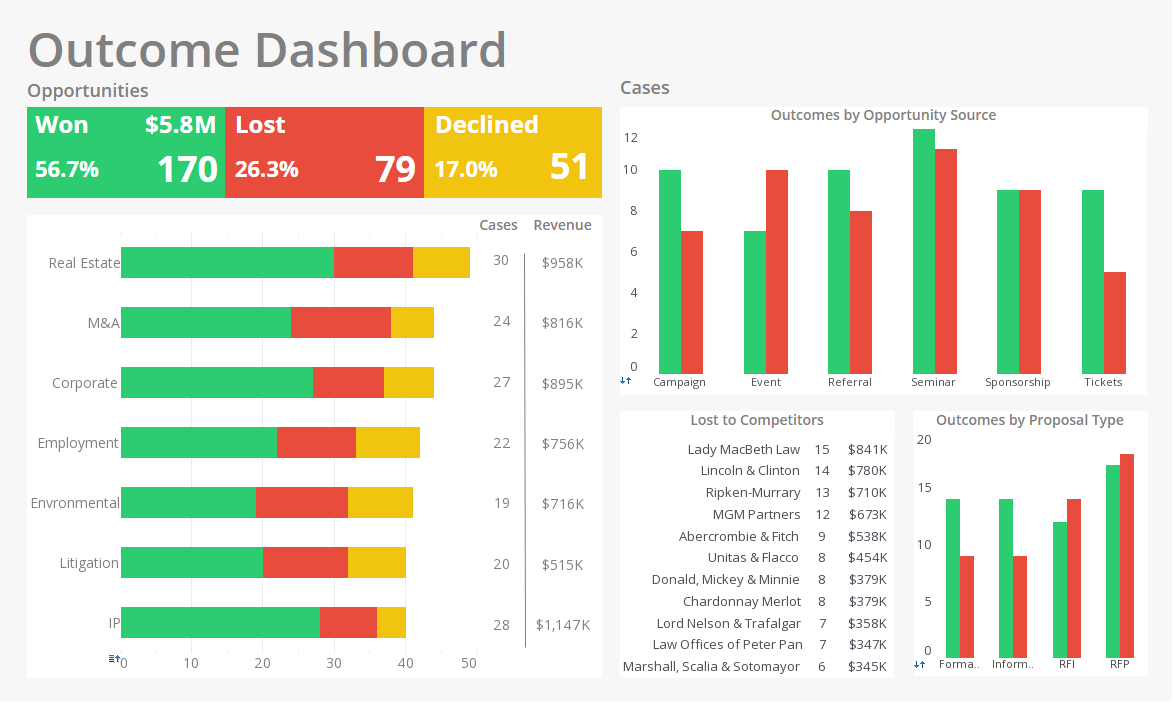Management Reporting Tools
A major issue with performance management software is usability.
Managers are often impeded by the fact that many reporting tools are designed for analytics by highly technical IT users.
StyleBI by InetSoft addresses this concern with software that makes advanced performance management capabilities easier to use and interact with.
Easy to Configure and Deploy
The tools offered by InetSoft deliver dashboards, scorecards, and reports that are both easy to configure and deploy. These tools appeal to organizations that crave simpler ways to perform business analysis. Style Intelligence allows users to identify their data sources and rapidly assemble reports and dashboards though a unique "data block" model.
Users can map data from multiple sources into a singular, spreadsheet-like data integration environment. StyleBI includes a visual composer that provides a dynamic and intuitive method for dragging and dropping associated data into charts, tables, or a multitude of other presentation components. This intuitive data modeling approach helps to reduce the inherent complications associated with ad-hoc reporting, sophisticated visual analysis, and multi-dimensional charting.
Interactive Dashboarding
StyleBI also provides its users with facilities for filtering data, building metrics from measures, and other iterative analytic capabilities. It supports direct publishing to Microsoft PowerPoint, Excel, and Word, as well as to Adobe Acrobat's PDF format. A standard calendar display aids users when selecting desired time intervals for analysis and reporting.
Reports and dashboards can be assembled with pages of content appropriate for each area of the business. Geographic mapping, scorecarding, management of metrics, and the ability to set threshold for action are available for more sophisticated users.
How An Attapulgite Clay Processor Switched From Wrike To InetSoft For Performance Measurement Needs
The Attapulgite clay processor’s decision to move performance measurement from Wrike to InetSoft was driven less by project management fatigue and more by the need for high-performance, domain-specific analytics. Wrike had served well as a task- and project-tracking hub during process improvements, but the plant’s KPIs—drying throughput by kiln, moisture variance by lot, particle-size distribution trends, and reagent consumption per ton—required live joins across LIMS outputs, MES event streams, procurement orders, and vendor quality certificates. InetSoft’s mashup and semantic layer made it possible to blend those heterogeneous sources without rebuilding monolithic ETL pipelines every time a new kiln or supplier was introduced, so the operations team finally got one consistent view of throughput, yield loss, and quality drift.
Performance was where the swap paid clear dividends. Dashboards that previously loaded slowly or returned partial results in Wrike-integrated reports became snappy with InetSoft’s caching and push-down capabilities. Engineers could run rolling-window analyses to detect when aggregate fines were creeping above spec, correlate it with a particular drying schedule and supplier batch, and see the downstream P&L impact in near real time. That responsiveness changed decisions on the plant floor: operators adjusted feed rates and screen settings within an active shift rather than waiting for end-of-day summaries, reducing rework and saving precious drying energy—an especially important win when energy and reagent costs are a meaningful portion of COGS for mineral processors.
The migration plan was pragmatic and prioritized high-value metrics. The team cataloged Wrike reports and task dashboards into operational, compliance, and commercial buckets and rebuilt the top operational views first—kiln performance scorecards, moisture-control alerts, incoming raw-clay acceptance dashboards, and a consolidated quality-export for regulators and customers. InetSoft’s reusable calculated members (e.g., normalized tonnage, moisture-adjusted yield, and standardized fines metrics) eliminated duplicate logic and ensured everyone quoted the same numbers. Role-based access controls and parameterized filters meant QA personnel could see detailed lab runs and traceability down to the mine-face batch, while commercial and executive users received summarized, margin-focused views without being overwhelmed by sensor minutiae.
Beyond technical gains, the transition nudged a cultural shift that multiplied the ROI. With trusted, fast analytics available, process engineers prototyped hypotheses directly in dashboards—testing whether a kiln airflow tweak reduced fines or whether a supplier change improved silt content—before asking IT to formalize connectors. That “test then industrialize” habit reduced the backlog of one-off tickets and let data engineering concentrate on hardening ETL and governance. Financially, the company saw fewer off-spec shipments, reduced reprocessing, and tighter inventory turns from better acceptance filtering; operationally, it gained a daily decision instrument rather than a task-tracking echo. In my view, moving from Wrike to InetSoft wasn’t just swapping tools for an attapulgite processor—it was upgrading to an operating model where measurement and action close the loop within the same shift.



